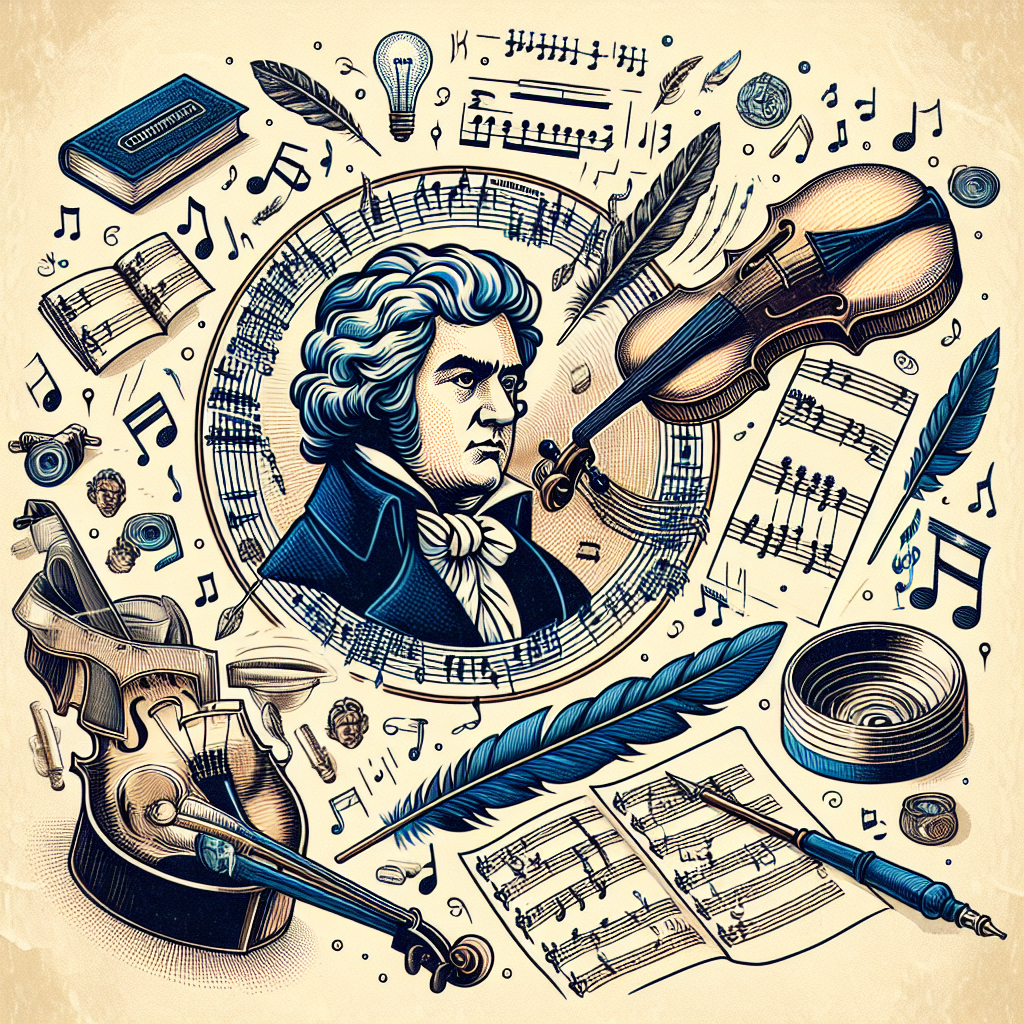
The Role of Counterpoint in Beethoven’s Late Works
Ludwig van Beethoven was a towering figure in the history of Western music. Born in Bonn in December 1770, Beethoven emerged as a revolutionary composer whose work would bridge the Classical and Romantic eras. While his early compositions were heavily inspired by his predecessors, Haydn and Mozart, the evolution of Beethoven’s musical style shows his relentless innovation and profound emotional depth.
One of the most intriguing aspects of Beethoven’s later works is his use of counterpoint. Counterpoint is a musical technique whereby two or more independent melodies are interwoven. It was a cornerstone of Baroque music, exemplified by J.S. Bach, but Beethoven revived and transformed it in his own unique way. This article will delve into Beethoven’s later period, exploring how he employed counterpoint to create complex, rich textures that have left a lasting impact on music theory and composition.
Early Inspirations and Evolution
Beethoven’s initial foray into music was deeply rooted in the Classical traditions laid down by Haydn and Mozart. His early works, such as his first two symphonies and early string quartets, display a clear mastery of Classical forms and a budding compositional voice. However, after moving to Vienna in 1792, Beethoven began to seek a style that was uniquely his own.
Throughout the early 19th century, Beethoven’s style evolved dramatically. By the time he composed his middle works, such as the “Eroica” Symphony and the “Appassionata” Sonata, Beethoven had fully established himself as a composer who pushed boundaries. His increasing deafness also drove him to delve deeper into the structural and emotional possibilities of music, seeking to convey experiences beyond auditory perception.
Beethoven’s Late Period
Beethoven’s late period, generally considered to have begun around 1815 and continued until his death in 1827, is marked by a profound exploration of new and innovative musical ideas. This era produced some of his most challenging and celebrated works, including the “Hammerklavier” Sonata, the Ninth Symphony, and the late string quartets.
During this period, Beethoven heavily employed counterpoint, blending it with the dramatic and often unpredictable spirit of Romanticism. His use of counterpoint in the late string quartets, in particular, demonstrates his complex musical thought and heightened emotional expression. These pieces, with their intricate fugal sections, remain some of the most studied and revered works in all Western classical music.

Counterpoint in Beethoven’s Late Works
In Beethoven’s late works, the use of counterpoint is both a throwback and a step forward. While he clearly drew inspiration from the contrapuntal masterpieces of the Baroque era, he also extended and modified these techniques to suit his visionary ideas. For example, in the “Grosse Fuge” (Great Fugue) Op. 133, Beethoven took the principles of fugue—a form largely codified by Bach—and imbued it with intense dissonances and dramatic shifts.
Another hallmark of Beethoven’s use of counterpoint is his flexibility. Unlike the strictly regulated counterpoint of earlier composers, Beethoven’s contrapuntal lines often exhibit an almost improvisatory freedom. This can be seen in the final movement of his Ninth Symphony, where he uses counterpoint to weave together the themes of the entire symphony in a masterful, yet emotionally charged, double fugue.
Influence on Later Composers
Beethoven’s innovative use of counterpoint had a profound impact on many composers who followed him. His late works were studied extensively by Romantic composers such as Brahms, who saw in Beethoven’s music a model for integrating technical rigor with emotional expressiveness. Wagner, too, drew on Beethoven’s late string quartets and symphonies as a blueprint for his operatic works, particularly in his use of leitmotifs and complex textures.
Even in the 20th century, composers such as Schoenberg and Stravinsky continued to draw inspiration from Beethoven’s contrapuntal techniques. Schoenberg’s 12-tone compositions and Stravinsky’s neoclassical works both exhibit a deep understanding of the counterpoint that permeates Beethoven’s late period. These composers recognized that Beethoven had laid a foundation for exploring new possibilities in harmony and texture, making him a pivotal figure in the evolution of Western music.
Beethoven’s Legacy in Music Theory
The role of counterpoint in Beethoven’s late works has also made a significant contribution to the study of music theory. Schenkerian analysis, a method developed by Heinrich Schenker, frequently focuses on Beethoven’s contrapuntal techniques as exemplary paradigms. Schenker saw in Beethoven’s works an ultimate realization of musical coherence, where seemingly independent lines converge to form a unified whole.
In contemporary music theory, Beethoven’s late works continue to be a goldmine for analysis and study. The intricacies of his counterpoint, the layering of themes, and the structural innovations he introduced are frequently dissected in music curricula worldwide. As a result, understanding Beethoven’s approach to counterpoint offers insightful perspectives on the broader principles of composition and musical architecture.
Conclusion
Ludwig van Beethoven’s late works represent a pinnacle of Western classical music, characterized by their rich emotional depth and innovative use of counterpoint. His ability to blend the rigid contrapuntal techniques of the Baroque with the emotive characteristics of the Romantic era resulted in compositions that are as technically rigorous as they are profoundly moving.
Beethoven’s late explorations in counterpoint not only pushed the boundaries of what was musically possible but also left an indelible mark on future generations of composers and music theorists. By revisiting and reimagining the contrapuntal traditions of the past, Beethoven forged a path that expanded the horizons of musical expression.
The enduring influence of Beethoven’s late works is testament to his genius. Through his innovative use of counterpoint, he created a legacy that continues to inspire and challenge musicians and scholars alike. As we continue to study and perform his music, we uncover new layers of complexity and beauty, reaffirming his status as one of the greatest composers in the history of Western music.